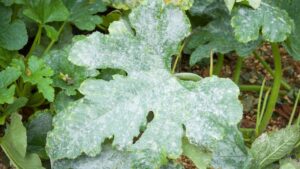Tired of battling stubborn weeds in your garden without resorting to harmful chemicals? Discover 10 effective and eco-friendly methods to keep those pesky intruders at bay. Our guide provides practical solutions for every gardener, whether you’re a novice or a seasoned green thumb. From simple household ingredients to innovative gardening techniques, we’ve compiled a comprehensive list to help you maintain a lush, chemical-free landscape. Say goodbye to harmful pesticides and hello to a healthier, more sustainable garden ecosystem. Let’s embark on a journey to control weeds naturally, preserving both the environment and your precious plants.
10 Ways To Control Weeds Without Chemicals
1. Mulching
Mulching is one of the most effective and environmentally friendly ways to control weeds without chemicals. By covering the soil with materials like wood chips, straw, or newspaper, you create a barrier that prevents weed seeds from germinating and blocks out sunlight essential for weed growth. Organic mulches also improve soil structure, retain moisture, and regulate temperature, promoting overall plant health. Apply a layer of mulch around your plants, ensuring it’s thick enough to suppress weed growth but not too thick to suffocate your plants. To keep mulch effective throughout the growth season, replenish it as needed.
2. Hand Weeding
While it may be labor-intensive, hand weeding is a highly targeted method for removing weeds without chemicals. Simply grab a garden tool like a trowel or a hoe and carefully uproot weeds by hand, ensuring you remove the entire root system to prevent regrowth. This method works best for small infestations or in areas where precision is crucial, such as around delicate plants or in vegetable gardens. Regularly inspect your garden for weeds and promptly remove them before they have a chance to spread and compete with your desirable plants for nutrients and resources.
3. Boiling Water
Boiling water is a simple yet effective way to kill weeds without resorting to chemical herbicides. This method works by pouring boiling water directly onto the weeds, effectively scalding and killing them on contact. It’s important to exercise caution when using boiling water to avoid damaging nearby plants or yourself. Target weeds on sunny days when they’re actively growing for maximum effectiveness. Keep in mind that boiling water may also affect beneficial microorganisms in the soil, so use it sparingly and selectively in areas where other methods aren’t feasible.
4. Vinegar Solution
Vinegar, particularly white vinegar with a high acetic acid content, can be a potent natural weed killer when used correctly. Mix vinegar with an equal part of water and a small amount of dish soap to create a solution that sticks to weed leaves and effectively kills them. Spray the solution directly onto the weeds, ensuring complete coverage. Be mindful to avoid spraying desirable plants, as vinegar can harm them as well. While vinegar is readily available and environmentally friendly, it may require multiple applications to fully eradicate stubborn weeds.
5. Corn Gluten Meal
As a pre-emergent herbicide, corn gluten meal, a naturally occurring byproduct of processing corn, prevents the germination of weed seeds. Apply corn gluten meal to your soil before weed seeds begin to sprout in the spring to prevent them from growing into mature weeds. Keep in mind that corn gluten meal is most effective against annual weeds and may not provide as much control over perennial weeds. While it’s safe for use around pets and children, be sure to follow application instructions carefully to achieve optimal results.
6. Landscape Fabric
Landscape fabric, also known as weed barrier cloth, is a synthetic material designed to suppress weed growth while allowing water and nutrients to penetrate the soil. Lay landscape fabric over the soil surface in your garden beds before planting, securing it with stakes or pins. Cut holes in the fabric to accommodate your plants, ensuring a snug fit around each one. Landscape fabric provides long-term weed control and helps conserve soil moisture, but it may require occasional maintenance to remove weeds that manage to grow through or around the fabric.
7. Hand-Pulling
Similar to hand weeding, hand-pulling involves physically removing weeds from the soil by grasping them near the base and pulling them out along with their roots. This method is particularly effective for annual weeds with shallow root systems or for removing small clusters of weeds in between plants. Regularly inspect your garden and pull out weeds as soon as you spot them to prevent them from establishing and spreading. Consider using a hand tool like a weeding fork or a dandelion digger for better leverage and to minimize soil disturbance.
8. Solarization
Solarization is a technique that utilizes the sun’s heat to kill weeds and soilborne pests, pathogens, and weed seeds. To solarize your soil, cover the area with a transparent plastic tarp during the hottest months of the year, typically from mid-summer to early fall. Seal the edges of the tarp with soil or bury them to create a tight seal and trap the heat inside. Leave the tarp in place for several weeks to allow the sun’s rays to heat the soil to temperatures lethal to weed seeds and pathogens. Solarization is most effective in sunny climates with consistently high temperatures.
9. Flame Weeding
Flame weeding, also known as thermal weeding or propane torch weeding, involves using a handheld propane torch to apply brief bursts of heat to weeds, causing them to wither and die. This method is particularly effective for controlling weeds in paved areas, gravel driveways, or between cracks in sidewalks where traditional methods may be impractical. Exercise caution when using a propane torch to avoid accidental fires or damage to nearby structures. Flame weeding is best suited for spot treatments and may require multiple applications to fully eradicate weeds.
10. Cover Crops
Cover crops, also known as green manures, are fast-growing plants intentionally grown to cover and protect bare soil during periods when your main crops aren’t actively growing. By shading the soil and competing with weeds for nutrients and sunlight, cover crops help suppress weed growth and improve soil health. Choose cover crops that are well-suited to your climate and soil conditions, such as clover, rye, or buckwheat. Plant cover crops in fall or early spring, and then either mow them down or incorporate them into the soil before they go to seed to prevent them from becoming weeds themselves.
Conclusion
In conclusion, controlling weeds without chemicals is not only achievable but also beneficial for both your garden and the environment. By adopting natural methods outlined in this guide, you’re not only eliminating the risk of harmful chemical exposure but also nurturing a more sustainable ecosystem. From homemade weed killers to cultural practices like mulching and crop rotation, there’s a diverse range of techniques at your disposal. Embrace these eco-friendly solutions to maintain a thriving garden while minimizing your ecological footprint. Together, let’s cultivate healthier landscapes and promote a greener, chemical-free future for generations to come.
FAQs:
FAQ: What are some common household items I can use for natural weed control?
Answer: Common household items like vinegar, salt, and boiling water can effectively kill weeds without harmful chemicals. Simply apply them directly to the weeds to see results.
FAQ: How do I prevent weeds from growing back after using natural methods?
Answer: To prevent weed regrowth, consider implementing strategies like mulching, regular hand-weeding, and planting cover crops. These methods help suppress weed growth while promoting soil health.




